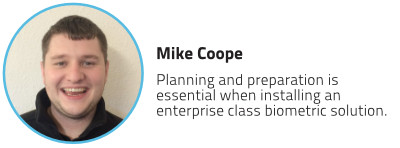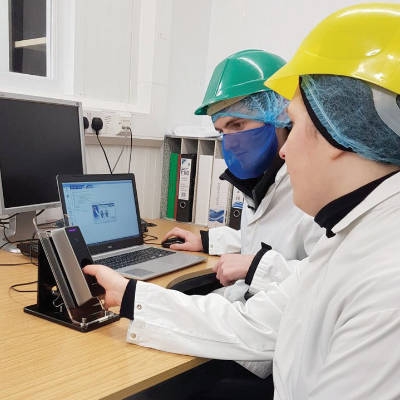
Mike Coope is head of the timeware® Project Management team that are responsible for planning all new attendance and access control installations and major upgrades. Here we ask him to outline the various phases involved in obtaining employee’s biometric data prior to project commissioning.

Mike, do we allow the customer to enrol their own staff when implementing timeware® biometrics?
No! We need to be in complete control of every phase of the project. If the biometric data is reordered in a disorganised and undocumented manner, this would affect subsequent phases of the project and could lead to major delays.
Please take me through the phases of obtaining employee’s biometric data…
First we have the database preparation phase:
We discuss the individual customer’s GDPR policy and ensure that personal data is kept secure through appropriate technical and organisational measures. If this was a new installation, we would first ask the customer to populate a spreadsheet with the employee names which we would then import into a dummy timeware® system ready for the enrolment phase. If, however, this was an existing customer undertaking a major upgrade, we simply upgrade the software to the latest version.
Secondly is the enrolment phase:
This is where the fun starts! We discuss with the customer the various daily schedules in operation to enable us to plan the times and days that the field technician needs to be on-site. This includes night-shifts and weekend work. We arrange with the customer to utilise an office on site for the duration of this phase and we ensure that we have the full co-operation of all team leaders. We work with the customers work patterns and attend site at the required hours of the day. This is not a 9 ‘till 5 project!
With good organisation we can enrol around 200 employees in 8 hours giving a target time of very roughly 2 minutes per person. This may seem easy but ensuring a good primary and secondary bioenrolment can take time and this is a ‘project critical’ procedure.
With the enrolment phase complete, next is the testing phase:
The testing phase is much simpler as we recall all employees over an agreed period of time to test their primary and secondary bio enrolments. This phase proves to the employee, (and the team leaders), that the templates have been captured correctly and that each template has been tested against all other templates in the company to identify the correct employee.
Mike, what benefits have you seen as a result of this somewhat lengthy enrolment procedure?
Introducing a biometric system of any kind can cause resentment if not handled correctly. If employees see that the introduction has been carried out in a professional manner and that the enrolment phase went well and that the testing phase was also completed without failure, I find that there is a general feeling of trust towards the system. Not only does this trust spread across the shop-floor but it also reaches team leaders, managers and then eventually the boardroom. Put simply: Every employee within the organisation must trust the system before the implementation of a biometric solution can be deemed a success.
